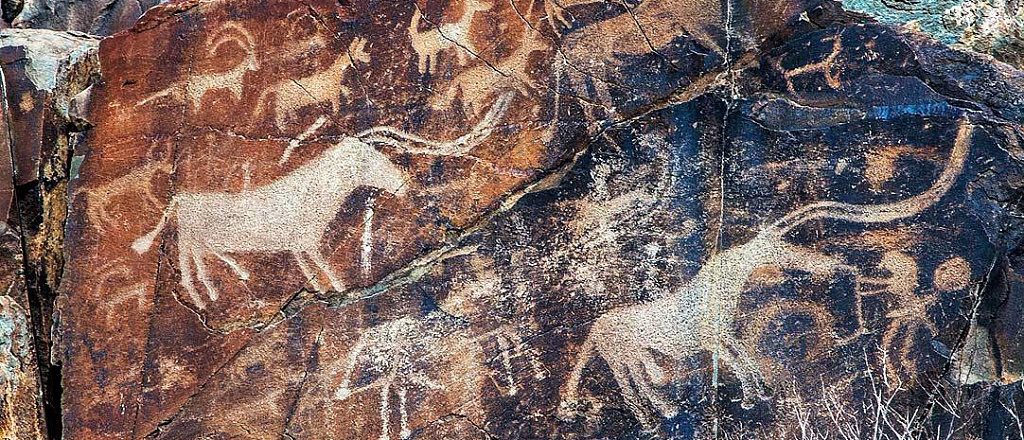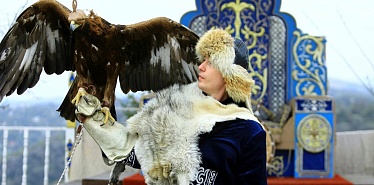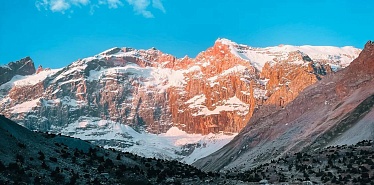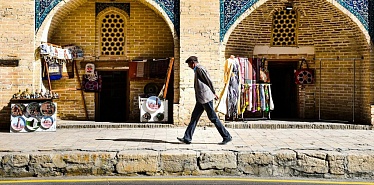Every country has its own cultural and historical heritages which are important not only for the country alone, but also for the whole world. Such sites, natural, cultural and mixed types, are included in the UNESCO heritage list. WE want to show you historically and culturally important places in Kazakhstan that have played an important role in shaping the culture and history of this place.
UNESCO was recognized by the United Nations in 1945 in order to respond to the belief of nations, to make impact in building peace among people and countries, and to create sustainable development by sustaining the hope of a new humanism.
The Mausoleum of Khoja Ahmed Yasawi
.JPG)
The first site included in the list in 2003 is The Mausoleum of Khoja Ahmed Yassawi. The Mausoleum, located in Turkestan city, former Yasi, was built from 1389 to 1405 by the order of Amir Timur. Its archeological solutions were also used in constructing Samarkand, the capital of the Timurid Empire.
The Mausoleum is 38.7 meters high and counted as one of the largest and best-preserved Timurid constructions. The monument has a conic-spherical dome which is counted as the largest in Central Asia, wall paintings, texts from the Quran on the drums of the dome, alabaster stalactites in the intrados of the domes, and so on.
There are three main reasons why Khoja Ahmed Yasawi Mosque is included to the UNESCO list:
“The Mausoleum is an outstanding achievement in the Timurid architecture, and it has significantly contributed to the development of Islamic religious architecture.
The Mausoleum was a prototype for the development pf a major building type in the Timurid period, becoming a significant reference in the history of Timurid architecture.
The Mausoleum and its property represent an exceptional testimony to the culture of the Central Asian region and to the development of building technology”.
Nauruzum State Nature Reserve and Korgalzhyn State Nature Reserve
In total, these two reserves have 450.344 ha and it is a home for globally threatened species such as Siberian white crane, the Dalmatian pelican, Pallas’s fish edge etc and therefore, these two nature reserves were included in UNESCO list in 2008.
Korgalzhyn is surrounded by a buffer zone and Nauruzum consists of three strictly protected areas and they are both connected by an ecological corridor.
Two areas were selected according to the following criteria:
“The property contains substantial areas of steppe and lakes with largely undisturbed associated biological and ecological processes. The property also contains over 200,000 ha of Central Asian steppe, more than half of which is pristine, and which is part of the temperate grassland biome.
Korgalzhyn and Nauruzum State Nature Reserves protect large areas of natural steppe and lake habitats that sustain a diverse range of Central Asian flora and fauna and support vast numbers of migratory birds”.
Petroglyphs within the Archeological Landscape of Tamgaly
The landscape of Tamgaly, petroglyphs or rock carvings site in the Semirechye area, concentrates about 5000 petroglyphs dating from the second half of the second millennium BC and the beginning of the 20th century. This area was included in UNESCO World Heritage list in 2004.
You have a great opportunity to see pictures of ancient tribal dance, blood sacrifice, how people used to depict the appearance of Gods, etc.
The criteria of choosing Tamgaly area for the world heritage site: “The dense and coherent groups of petroglyphs, with sacred mages, altars and cult areas, together with their associated settlements and burial sites, provide a substantial testimony to the lives and beliefs of pastoral peoples of the central Asian steppes from the Bronze Age to the present day”.
At present, the list includes 16 different sites of the Great Silk Road located on Syrdariya route.













